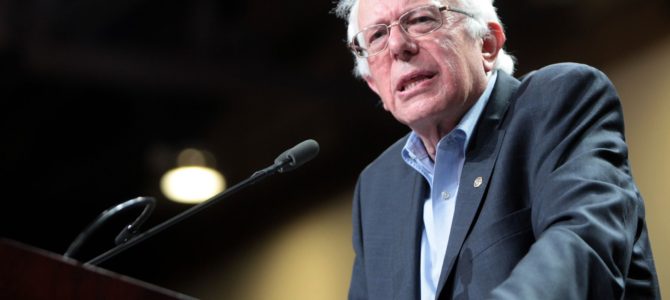
House Democrats recently revealed their plan to reshape higher education via the College Affordability Act, a bill to reauthorize the Higher Education Act (HEA). It’s not quite “free” college for all, but it’s “free” college for a lot of people, plus heavy government spending on favored categories of people and programs. Think of it as Bernie Sanders lite.
Right now, with the Senate in Republican hands and Senate Education Chairman Lamar Alexander promoting his “skinny” HEA reauthorization bill, the College Affordability Act is going nowhere. But it’s still worth paying attention to. Democrats hope to enact a similar agenda — or one more radical — should they take the White House and Congress in 2020.
The bill is also a warning shot to Republicans, who for years have put higher education on the back-burner and watched it descend into politically correct chaos. Alexander’s HEA bill, which would tinker with federal student aid and reauthorize the status quo on everything else, is exactly what we don’t need.
Alexander views it as an achievable compromise. Democrats see it as a capitulation. With Democrats proposing radical expansions of the federal government’s role in higher education, Republicans should present a positive agenda that promotes free speech, cuts special-interest funding, and promotes academic rigor.
Free College Is Extremely Costly
The College Affordability Act bills itself as a “down payment” on free college. Of course, all the “free college” proposals involve free public colleges. The only included private colleges are Historically Black Colleges and Universities and minority-serving institutions. (For a breakdown of the various “free college” plans Democratic presidential contenders are promoting, see here.) Under this system, private colleges would operate at a severe disadvantage.
This bill creates the possibility of”free” community college. Taxpayers to the federal government and states would jointly pay full tuition costs. Here’s how that would work.
The federal government would offer money to states conditionally — they must “agree to waive community college tuition and fees” and maintain their current spending levels on public four-year programs and any state financial aid programs. States would be required to chip in toward students’ tuition “on a first-dollar basis,” meaning before any other aid — Pell Grants, state grants, private grants, outside scholarships — is taken into account, leaving students to spend that extra money on living expenses.
So far in the United States, experiments with free college have instead largely been confined to “last-dollar” programs, such as the Tennessee Promise, wherein students must exhaust other available grants before the state steps in to pay remaining tuition. It’s partly a cost-saving measure for taxpayers. But it also reflects the view that students should retain at least some responsibility for covering their own costs and choosing a lifestyle within their means.
Democrats, however, assume taxpayers should make available Pell Grants and other aid in generous quantities, to cover students’ living costs and whatever else they might need or want.
No Kidding: Federal Funding for Flat Tires
What do students “need” in college? According to the College Affordability Act, they need a whole lot, and working people not currently getting a college education should pay for most of it. The legislation seeks to remove all obstacles for potential students, both financial and academic. Consider these scenarios.
Do you have a child? Federal taxpayers would subsidize child care while you are in class.
Are you struggling to pass your classes? Federal taxpayers would fund your college to provide all manner of “wrap-around services” and academic help to bump you across the finish line, regardless of whether college is a good fit for you.
Do you need remedial courses? Never fear, federal taxpayers will cover those costs through grants.
Are you failing to graduate on time? You might think “on time” means four years, which is how long a bachelor’s degree should take for a full-time student. The government, however, currently considers six years to be “on time.”
Under the College Affordability Act, however, the government would give students even more time to finish college on the taxpayers’ dime. It would extend Pell Grant eligibility to 14 semesters, or seven years, nearly double what a bachelor’s degree requires. It would also remove the provision limiting students to use federally subsidized loans for up to 150 percent of their program length (i.e., six years for a bachelor’s degree).
Are you hungry? Your college will now be required to promote food stamp use and help students sign up for other welfare programs. Additionally, states will be required to consider how they can change their state laws to “facilitate participation in means-tested federal benefit programs among college students.”
Here’s the real kicker. Do you have a flat tire? No, seriously. If you have a flat tire or some other emergency that you failed to prepare for financially, federal taxpayers would now fund “emergency grant aid” via the Federal Supplemental Educational Opportunity Grant to “help students address emergencies like a flat tire, food insecurity, or loss of housing.”
Democrats insist such aid will go to the neediest and most deserving, who could perform well academically if not for various difficulties. No doubt that is the case for a few students. But the bill fundamentally changes what the federal government perceives college to be about: quality of life, not education. Colleges would become conduits of federal welfare benefits, a place to bubble-wrap students from the exigencies of life.
Lower Standards
Democrats are proposing these “wrap-around services” partly because they’re convinced almost everyone should go to college. That means a major influx of academically ill-prepared students who are going to need a lot of hand-holding and incentives to stick it out to graduation day.
The College Affordability Act foresees this problem and gives colleges financial incentives to lower their admissions standards and enroll more students. As a condition of participating in the free college program, states would be required to “prioritize spending on underfunded institutions that serve low-income students, students of color, students with disabilities and students in need of remediation.” In other words, colleges enrolling lots of students who are not ready for college-level work will receive priority funding.
The bill also creates entirely new income streams for colleges that lower their standards, authorizing new funding for community colleges to “develop and implement evidence-based programs that boost degree completion through academic and financial advising and other student supports.” It offers additional funding for “institutions to implement evidence-based remedial education reform strategies that … reduce dropout rates.” Degree completion and dropout rates might not be such worries if colleges admitted students prepared for college.
Fake Accountability
In exchange for all this increased funding, institutions can expect more onerous regulations, primarily in the form of measuring whether they are enrolling enough “underprivileged” students. The bill lowers academic accountability to achieve this goal.
Consider the Cohort Default Rate, or CDR, which measures how many borrowers at an institution default on their loans within a year of entering repayment. Institutions with high CDRs can be denied eligibility to participate in federal Title IV student aid programs — effectively a death sentence for institutions. The College Affordability Act boasts that it transforms the CDR metric to “establish multiple thresholds that require institutions to improve” their share of students avoiding default.
But the bill simultaneously makes it nearly impossible for students actually to default. It takes the federal student aid ombudsman at the Department of Education and “transforms” the position into a “borrower advocate.” It makes loan terms more generous, expands Public Service Loan Forgiveness, in which government employees and certain nonprofit employees can have their loans forgiven, and adds a special category of loan forgiveness just for farmers.
It promotes income-based repayment, in which borrowers repay only what they can afford to pay, based on federal government assessment. Under the College Affordability Act, anyone making $31,225 per year or less (that is, 250 percent of the federal poverty line), would pay nothing and still be considered up to date with loan payments.
It automatically moves borrowers who are 120 days delinquent on their loans to income-based repayment, effectively staving off default. It ends “interest capitalization” for borrowers who apply for loan deferments; in effect, these borrowers would not only be allowed to stop making payments, but the federal government would cease charging interest.
All these changes would gut the CDR accountability system. The College Affordability Act builds in further loopholes to protect favored institutions. Institutions that somehow still manage to accumulate a high CDR can avoid penalties by receiving “technical and financial support” from the Department of Education.
Who deserves this special treatment? “Only public institutions and private, non-profit institutions that serve a large share of Pell students are eligible for this assistance.” So public institutions get a free pass. Private colleges can skate by if they enroll enough Pell Grant (low-income) students. But for-profits face every rule in the book.
Consider also the on-time repayment rate. This would measure not just whether students are avoiding default, but whether they are actually repaying their loans, and then punish institutions whose borrowers have low on-time repayment rates. This is a commonsense reform Republicans have discussed for years but never successfully enacted.
The College Affordability Act takes up the rhetoric of an on-time repayment rate but strips it of penalties. It specifies that for the purposes of students in forbearance or income-based repayment, $0 payments count. One might think if students cannot afford even $1 payments, they should not count as exemplars of their college’s ability to prepare job-worthy graduates.
Here again, the bill provides loopholes to protect favored institutions. Those “investing in instruction and student services” (is it too much to assume this means the “wrap-around services” and remediation programs touted earlier?) and those “subject to extenuating circumstances” (enrolling high numbers of poorly prepared students?) “may also be eligible for relief from penalties.”
Title VI and Title IX
The College Affordability Act also requires institutions to designate a Title VI officer, clearly modeled after Title IX officers, responsible for handling investigations of reported discrimination on the basis of race, color, and national origin. Think of the Title VI officer as a federally mandated chief diversity officer, with the full weight of the federal government to validate every investigation into perceived bias.
On Title IX, Education Secretary Betsy DeVos has rolled back the Obama administration’s misinterpretations and twisted expansions. The College Affordability Act would undo all of that, prohibiting the Education Department from introducing regulations guaranteeing due process, and requiring religious institutions to publicly disclose a detailed rationale for every exemption they request, which is significant considering the left has weaponized Title IX for LGBT causes.
What We Need Instead
The College Affordability Act would make higher education worse, gutting academic accountability, urging more students to attend college regardless of their preparation, pushing colleges to lower their standards, and rewarding institutions based on identity politics. Yet it’s milder than the proposals coming from Democratic presidential contenders.
Higher education needs a different kind of overhaul. My colleagues and I at the National Association of Scholars laid out a template two years ago in our Freedom to Learn Amendments to the Higher Education Act.
We need serious federal student aid reform, capping the amount of money students can borrow from the federal government, instituting GPA requirements for federal aid, ending special-interest funding, and breaking up the Department of Education’s monopolistic power to disperse that money. We need “skin in the game,” making colleges liable when they admit ill-prepared students, sinking them in debt while knowing they are unlikely to graduate.
We need campus free speech. Intellectual freedom is the backbone of higher education. Public colleges that violate the First Amendment should lose eligibility for Title IV funding. Private colleges should at least be fully transparent about their speech policies, and be held accountable when they apply them inequitably.
We need transparency and accountability when colleges accept large gifts from foreign sources. We need religious freedom protections for students and institutions. We need thoroughgoing reform of Title VI, which funds “area studies,” most notably Middle East Studies centers, notorious for bias and lack of intellectual diversity.
Higher education needs serious reforms. The College Affordability Act is not the way to get there.








